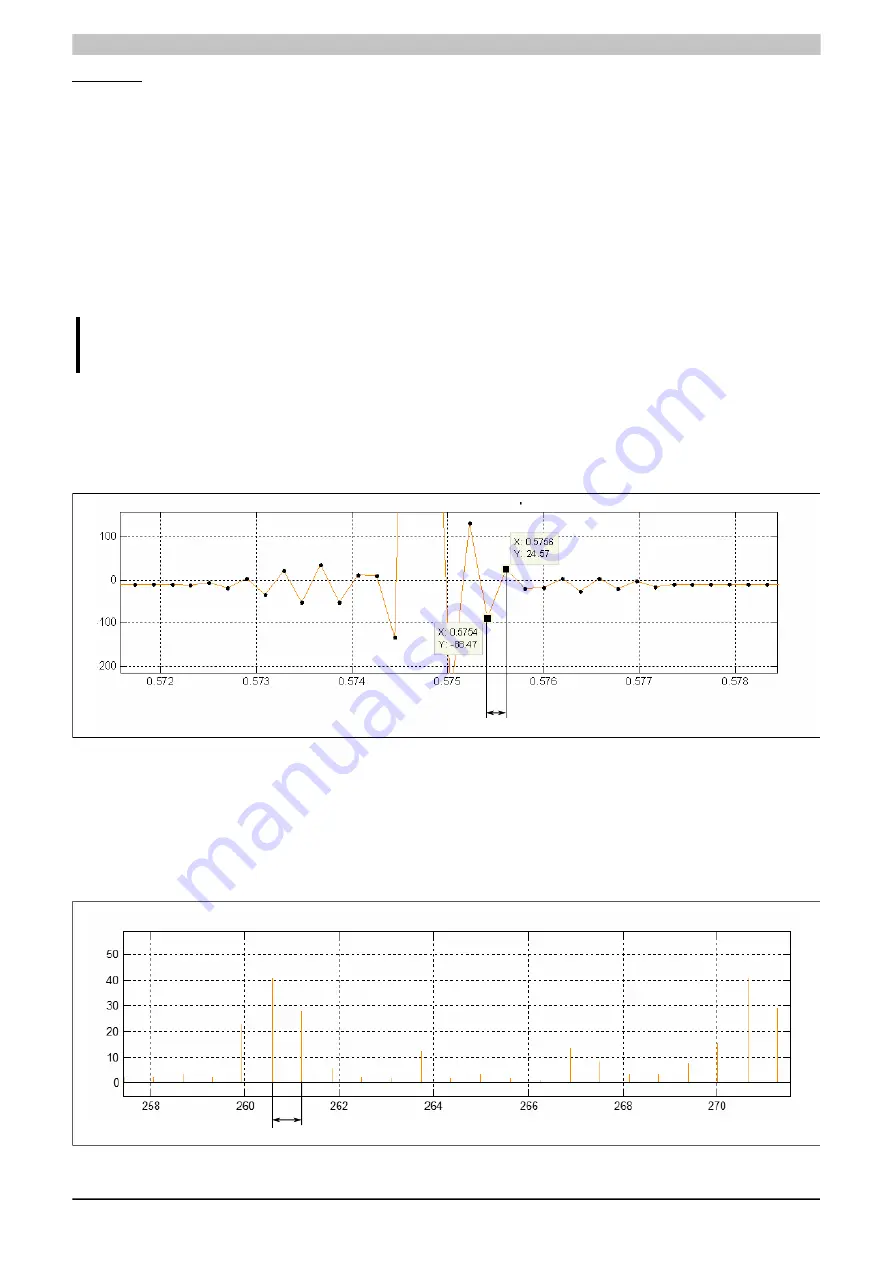
X90 mobile modules
X90 mobile system User's manual V 1.20 - Translation of the original manual
247
Resolution
The time-continuous input signal is converted into a series of discrete digital output values. The A/D converter
resolution determines the maximum possible number of digital values. Since this is always a discrete number,
digitization always results in a deviation from the actual input signal, which is known as quantization error.
The sampling rate determines the interval between 2 conversions and must be selected to suit the type of pro-
cessing planned for the signal. For many signal processing tasks, it is fundamentally important to adhere to the
sampling theorem. The module performs appropriate filtering and decimation steps to ensure that the sampling
theorem is adhered to at all times, regardless of the configured sampling rate.
In the time domain, a higher sampling rate allows for a more detailed description of the signal but also consumes
a larger amount of memory. In the frequency domain, a higher sampling rate increases the maximum frequency
that can be evaluated. Since a defined number of values is used for the FFT, however, the resolution decreases
and thus the possibility of distinguishing frequency ranges close to each other.
Information:
On the X90CM480, a max. frequency of 200 Hz results in a distance of 0.0629 Hz between 2 lines.
Time signal
The resolution can be identified in the time signal from the distance between 2 adjacent measurement points.
Example
"MaxFrequencyRaw"
is 2 kHz in this example.
Amplitude
[mg]
Time [sec]
Sampling time [s] = 193 μs
Figure 78: Time signal with corresponding resolution
Frequency spectrum
The resolution in the frequency spectrum indicates the distance between the individual frequency lines (spectral
lines) that can still be evaluated.
Example
Frequency spectrum at a MaxFrequency of 2 kHz.
Amplitude
[mg]
Frequency [Hz
]
Frequency resolution = 0.6294 Hz
Figure 79: Frequency spectrum
















































